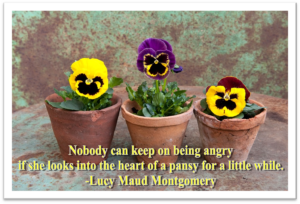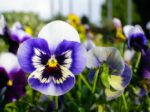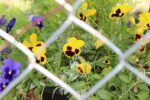
Did you know that pansies and violas are edible? They are high in vitamins A and C. They have a strong flavor and have been used to make syrup, flavored honey, and salads. Both the leaves and flowers can be used as a garnish for cold fruit or cream soups.
While I have used pansies as a garnish, I prefer to plant them and admire their rich, dazzling jewel-tone colors. Some of the deepest blues, reds, and purples are found in pansies. There are single, double, and tri-colored varieties. They are also available in white, yellow, pink, and orange and put on quite a show in beds and containers, from fall to spring. Choices, choices, choices!
Early fall and early spring are the best times to plant, when low temperatures start to cool off below 65. If you haven’t already planted pansies, now is the time.
Pansy care
One of the many reasons I love pansies is that they are low maintenance. They thrive on about an inch of water a week. If it doesn’t rain, water them in the mornings, allowing them to dry by the afternoon. Like most flowering plants, pansies get hungry. Feed them a balanced, all-purpose fertilizer about once a month. I prefer a 5-10-5 or similar blend of water soluble fertilizer. Another tip is dead-heading and pinching back leggy stems to encourage more blooms.
Pansies are also associated with love and you can hear it in their other names – heartsease, hearts delight, call-me-to-you, love lies bleeding, and love-in-idleness. Don’t you love that?

Movie fans may remember Disney’s classic adaptation of Alice in Wonderland, which features a chorus of singing pansies. While I’ve never heard my pansies sing, few plants create color and happiness more than pansies, one of the top selling bedding plants in the fall landscape.
Have you planted your pansies yet? Cheer us up with your pictures. [email protected] or on our Facebook page or Instagram.














